AO Edited
Archaeological Site inside Monastiraki Metro Station
View the ancient remains of buildings and the ancient "River of Hades" before hopping on a train.
History is ever-present in Athens. From the ancient Agora to the Parthenon, the past is never far out of reach—even in a busy metro station. In downtown Athen’s Monastiraki Metro Station, just north of the Acropolis, an active archaeology site is visible alongside the busy commuter rail.
During the construction of the Monastiraki Metro Station, several archaeological finds were uncovered, dating as far back as the 8th century B.C. and up to the 19th century A.D. The finds shed light on the city’s ancient past and provide insights into the city’s development through time.
There are three main parts to the archaeological exhibit in the station: the uncovered riverbed of Eridanos (the ancient “River of Hades”), the ceiling artwork “Time in My Hands” by Leda Papaconstantinou, and a display of one of the unearthed buildings.
The Eridanos River played a crucial role in the urban design of the area, rising from the lower slopes of Mount Lycabettus, a prominent limestone hill northeast of the Acropolis, flowing through Athens, and emptying into the Ilissos River, which flows into the sea. In the Late Classical period (5th-4th centuries BC), the river bed was bounded on both sides by large blocks and two paths on either side, which defined the building line for nearby structures. During Emperor Hadrian’s time (117-138), the Eridanos River was roofed over with a brick vault and converted into a sewer. A large retaining wall was built on the north side of the river to support a wide stoa or street, and the building line was set back five yards.
Papaconstantinou’s Time in My Hands consists of 324 separate plexiglass pieces that together cover an area of 160 square yards. The Attiko Metro commissioned the work in 2010. Leda Papaconstantinou is a Greek visual and performing artist from Larissa, the fourth most populous city in the nation 130 miles north of Athens. Her work first gained prominence in the late 1960s. In addition to her performance art pieces, she also works in visual mediums like painting, sculpture, video, and film.
En route to Line 3 in the station, you will go past some ancient buildings. The ruins are mainly of private buildings such as workshops and storage rooms, and the dating of these structures was based on various finds, including marble sculptures, architectural members, mosaic floors, wall paintings, decorative plaster, vases, coins, metal, and bone artifacts. The Ist Ephorate of Byzantine Antiquities of the Ministry of Culture and Attiko Metro completed the excavation and landscaping of the area.
Know Before You Go
To view the riverbed and the ancient building, you will need to purchase a train ticket to enter the area it is in.
For Papaconstantinou's artwork, it is in the main "foyer" of the train station. There is no need to purchase a train ticket to see the work.


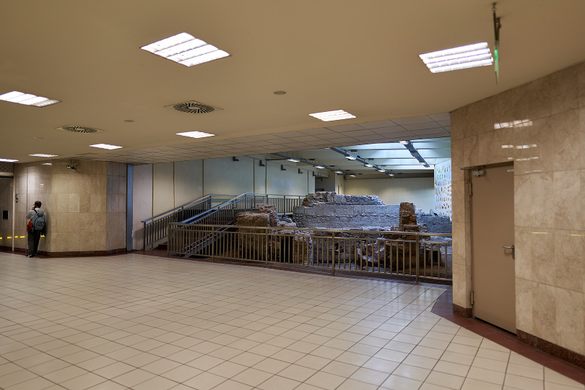
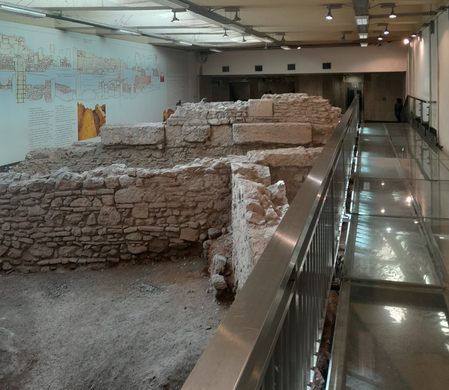








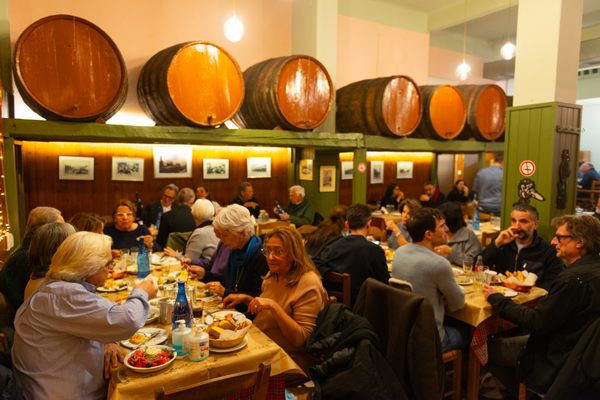

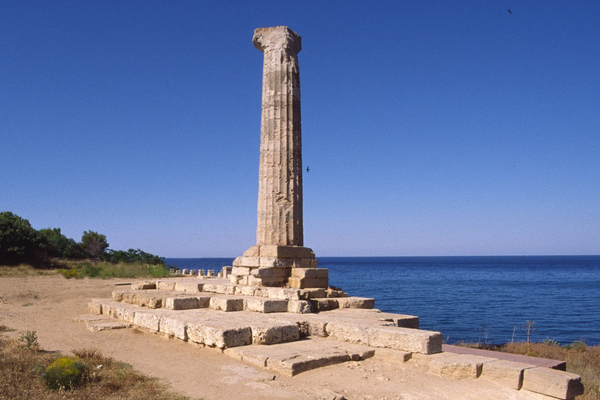

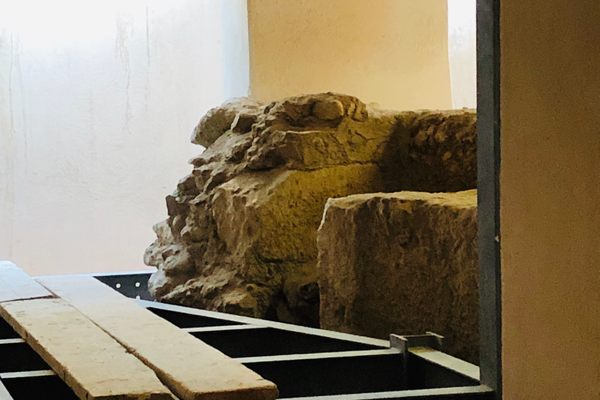

Follow us on Twitter to get the latest on the world's hidden wonders.
Like us on Facebook to get the latest on the world's hidden wonders.
Follow us on Twitter Like us on Facebook